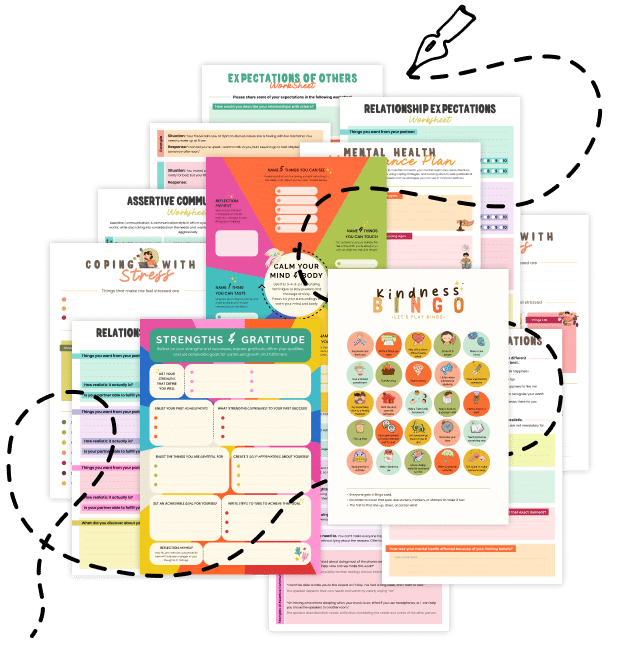20 Things You Should Know About Visual Memory Encoding
Discover how transforming information into vivid pictures can help you remember better. Explore 20 key insights about Visual Memory Encoding and learn practical ways to boost your recall.
1. What Is Visual Memory Encoding?
Visual Memory Encoding is the process of converting information—words, ideas, or experiences—into mental images. By attaching visual cues to concepts, your brain can retrieve them more easily later on.
2. Why It Matters
Humans are wired to process and remember images more readily than abstract text or numbers. Leveraging this natural tendency can improve recall, learning speed, and overall comprehension.
3. Real-World Examples
- Remembering Names: Associating someone’s name with a vivid mental image (e.g., “Rose” with an actual rose)
- Studying History: Turning historical events into timelines or storyboards
- Recall in Daily Life: Using visual to-do lists or “mental snapshots” to remember errands
4. The Brain’s “Picture Superiority Effect”
Research shows that people remember pictures more effectively than words. This phenomenon, known as the picture superiority effect, underlies why visual memory encoding can be so powerful.
5. Mnemonic Devices
Techniques like the Method of Loci (a.k.a. the memory palace) rely on visual memory encoding. You imagine a familiar location and place items there in your mind, creating a memorable visual map.
6. Dual Coding Theory
According to Dual Coding Theory, processing info both verbally and visually doubles your chances of recall. Combining text with relevant images or doodles can cement the info in your long-term memory.
7. It’s Not Only for “Visual Learners”
Even if you consider yourself more of an “auditory” or “kinesthetic” learner, adding visual elements can still boost retention. The human brain is inherently attuned to images, regardless of your primary learning style.
8. Use Simple Sketches
You don’t need artistic talent. Simple stick figures or symbolic icons can effectively anchor memories. The act of drawing something (even if it’s rudimentary) forces your mind to engage visually.
9. Color-Coding for Clarity
Using color strategically—like highlighting main ideas in red and subpoints in blue—can help your brain segment information, making it easier to locate in your mental “storage.”
10. Visual Anchors in Note-Taking
Instead of (or in addition to) linear text notes, try mind maps or concept diagrams. These visual formats let you see relationships between ideas at a glance, reinforcing connections in your memory.
11. The Role of Emotion
We remember images that evoke emotion more vividly. Creating emotional resonance—whether it’s humor, excitement, or curiosity—can further enhance the sticking power of visual memories.
12. Storytelling Enhances Retention
Combine visuals with narrative structure. Crafting a mini story around the info you want to remember can add context and emotional punch, making recall more natural.
13. Avoid Overload
While visuals are helpful, too many can clutter your memory, especially if they lack coherence. Select or create images that directly link to key points, rather than decorative or irrelevant pictures.
14. Practice Visualization Exercises
- Picture Walk-Throughs: Close your eyes and mentally scan a room or scene in detail.
- Imagined Scenarios: Invent a scenario to embed facts, like a “store” where each shelf holds a piece of info.
15. Bridging Abstract Concepts
Even highly abstract ideas (like “justice” or “complex math formulas”) can be anchored by symbolic imagery—e.g., a balanced scale for justice or a building blueprint for structured equations.
16. Recall vs. Recognition
Visual encoding boosts free recall (pulling info from memory without cues) and recognition (spotting the correct info among options). This flexibility makes it valuable in both test-taking and real-world situations.
17. Mental Rehearsal
Revisiting your visual cues regularly—through spaced repetition or quick mental “flashbacks”—keeps them sharp. This practice reinforces neural pathways tied to those images.
18. Technology Aids
Apps for digital sketching, mind mapping, and diagram creation can help you quickly generate and store visual cues. Some also include spaced repetition reminders to review your visuals.
19. Incorporate Multiple Senses
While the focus is on images, you can deepen encoding by layering sound, touch, or even smell associations, creating a richer, multisensory memory. For instance, pairing a specific scent with a key concept.
20. Related Topics to Explore
- Method of Loci: An advanced mnemonic that uses familiar places to store mental images.
- Cognitive Load Theory: Ensuring you don’t overwhelm your working memory with overly complex visuals.
- Mind-Wandering Mode: Letting your mind drift can sometimes spark creative imagery and deepen associations.
- Brain Lateralization Exercises: Cross-hemisphere tasks that might enhance both verbal and visual processing.
Quick Tips to Strengthen Visual Memory Encoding
- Draw It Out: Sketch or doodle new concepts, no matter how basic.
- Highlight & Color-Code: Use visual markers to differentiate main ideas from details.
- Create Mental Movies: Imagine information as scenes or short films in your head.
- Review Regularly: Glance back at your visual notes or mentally replay your images.
- Use Metaphors: Translate complex or abstract concepts into tangible, visual metaphors.
Visual Memory Encoding taps into one of our most powerful cognitive strengths—our ability to vividly picture things. By transforming dry facts into mental images, mind maps, or quick sketches, you give your brain more sticky, memorable representations to latch onto. Whether you’re studying for an exam, learning a new language, or simply trying to recall names and faces, a dose of visual encoding can go a long way in boosting retention and clarity.
Share this post if you know someone who struggles to remember details—these visual strategies might be the key to unlocking a more efficient and engaging approach to learning!

